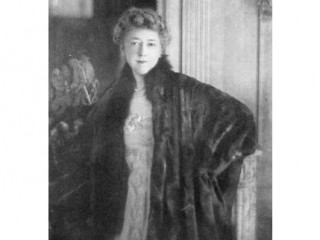
Elsie De Wolfe biography
Date of birth : 1865-12-20
Date of death : 1950-07-12
Birthplace : New York City, New York, U.S.
Nationality : adryna
Category : Famous Figures
Last modified : 2011-03-19
Credited as : Actress The House in Good taste, interior designer, Lady Mendl
Elsie de Wolfe was the first professional interior designer in America. She believed in achieving a single, harmonious, overall design statement, and felt that the decoration of the home should reflect the woman's personality, rather than simply the husband's earning power. De Wolfe introduced a startling freshness to the elaborate, heavily fringed and tasseled Victorian design sensibility of her time.
Before de Wolfe began helping her friends with home decoration around 1900, American homes had never been "designed." Upper-class women called in curtain makers, furniture salesmen, wallpaper hangers and other craftsmen, and then attempted to arrange these elements themselves. While carrying on the tradition of decorative surfaces and harmonious color combinations, de Wolfe cleared away the thickly curtained and upholstered look of the nineteenth century. Having spent summers in France, she had come to prefer the light, gilded interiors of Versailles and the delicate lines of eighteenth-century French furniture.
Elsie de Wolfe was born in 1865 to a fashionable New York City family. In 1884, she began an acting career, appearing in A Cup of Tea. At this time she met Elisabeth Marbury, who would become a lifelong friend and companion. Never an unqualified success in the theater, de Wolfe continued to act in various productions in the United States and abroad until she was in her early forties. At one stage of her career, while she had her own theatrical company, she planned all the stage designs, impressing her audiences with her great fashion sense, her fine eye for color, and her ability to create a harmonious environment.
In the late 1890s, de Wolfe and Marbury moved into Washington Irving's former home in New York City. De Wolfe tried her hand at designing an interior from scratch, impressing her visitors. When these women asked for advice in decorating their own homes, de Wolfe gladly helped them in their attempts to create modern, beautiful, and harmonious interiors. Around the turn of the twentieth century, de Wolfe decided to retire from the stage and launch a career as a professional interior designer. She had cards printed with her logo, a wolf holding a flower in its paw, and opened an office in New York City.
In 1905, architect Stanford White commissioned de Wolfe to design interiors for the exclusive Colony Club, a retreat for upper-class women. To research the designs for her first large commission, she sailed to England and brought back flowered chintz (then considered an inexpensive, countrified fabric) and simple furniture, which she planned to use in white-painted rooms lined with trellises with real ivy growing on them. Her idea was to re-create an English cottage garden indoors, in a clean, light, comfortable interior. Although her ideas for the Colony Club stirred considerable controversy at first, de Wolfe quickly became one of the most sought-after designers of her generation.
By the early 1910s, de Wolfe had developed her own distinctive style, which included bright colors, fresh paint, and easily maintainable surfaces. One visitor described de Wolfe's home as a "model of simplicity in gold and white." De Wolfe covered dark wood with white paint, removed heavy draperies from windows to let in the light, and covered furniture in chintz. Her book The House in Good Taste (1913) has influenced several generations of designers. In addition to the Colony Club, de Wolfe's important design projects include the homes of Mrs. George Beckwith, Mr. and Mrs. William Crocker, the Barrymore, and Henry Clay Frick, as well as a dormitory for Barnard College in New York City.
In 1926, de Wolfe married Sir Charles Mendl and moved to Beverly Hills, California, where she continued to startle her contemporaries with her innovative designs. She was probably the first woman to dye her hair blue, to perform handstands to impress her friends, and to cover eighteenth-century footstools in leopard-skin chintzes.
















